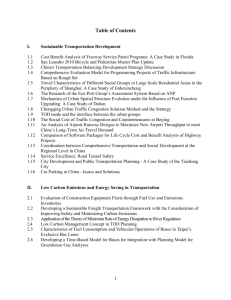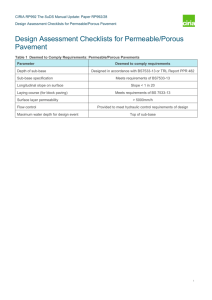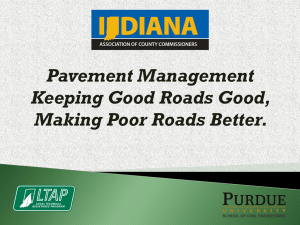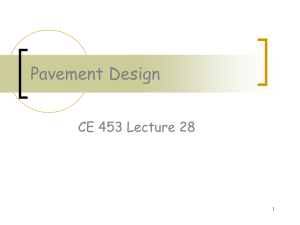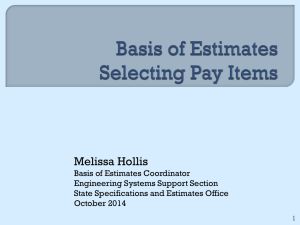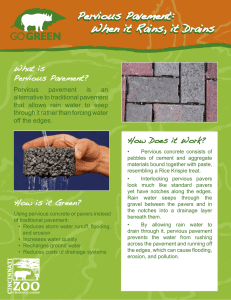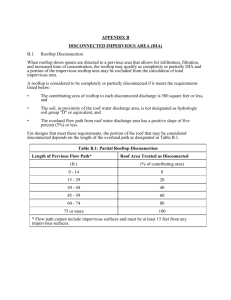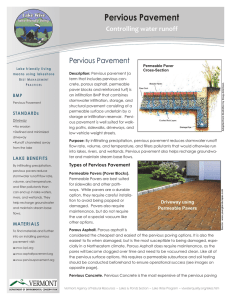Pervious pavement checklist
advertisement
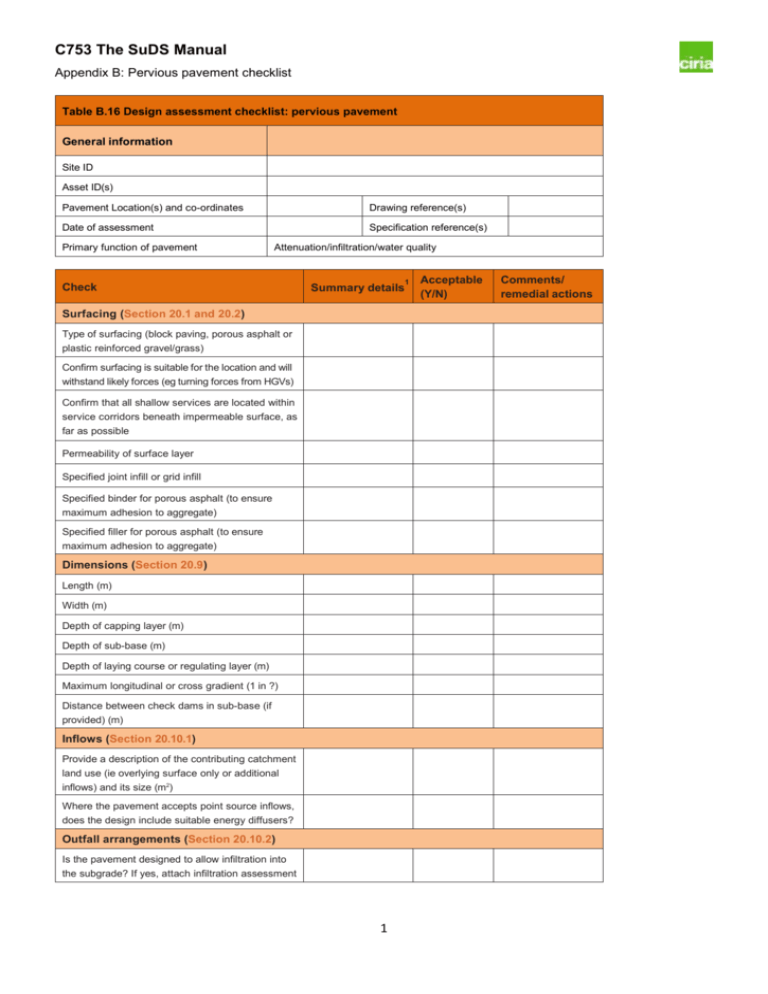
C753 The SuDS Manual Appendix B: Pervious pavement checklist Table B.16 Design assessment checklist: pervious pavement General information Site ID Asset ID(s) Pavement Location(s) and co-ordinates Drawing reference(s) Date of assessment Specification reference(s) Primary function of pavement Attenuation/infiltration/water quality Check Summary details Surfacing (Section 20.1 and 20.2) Type of surfacing (block paving, porous asphalt or plastic reinforced gravel/grass) Confirm surfacing is suitable for the location and will withstand likely forces (eg turning forces from HGVs) Confirm that all shallow services are located within service corridors beneath impermeable surface, as far as possible Permeability of surface layer Specified joint infill or grid infill Specified binder for porous asphalt (to ensure maximum adhesion to aggregate) Specified filler for porous asphalt (to ensure maximum adhesion to aggregate) Dimensions (Section 20.9) Length (m) Width (m) Depth of capping layer (m) Depth of sub-base (m) Depth of laying course or regulating layer (m) Maximum longitudinal or cross gradient (1 in ?) Distance between check dams in sub-base (if provided) (m) Inflows (Section 20.10.1) Provide a description of the contributing catchment land use (ie overlying surface only or additional inflows) and its size (m2) Where the pavement accepts point source inflows, does the design include suitable energy diffusers? Outfall arrangements (Section 20.10.2) Is the pavement designed to allow infiltration into the subgrade? If yes, attach infiltration assessment 1 1 Acceptable (Y/N) Comments/ remedial actions C753 The SuDS Manual Appendix B: Pervious pavement checklist Check Summary details Provide details of any flow control systems, overflow arrangements and limiting discharge rate from pavement Is a geomembrane required to prevent infiltration or protect foundations? If yes, give reason Depth to maximum likely groundwater level (m) Attenuation (Section 20.5) Confirm voids ratio of sub-base material Demonstrate collection pipework is of sufficient capacity? Demonstrate that if the sub-base is used to convey water, the flow capacity will be sufficient? Provide calculations for maximum water depth and return period for the design event Check dams required because of sloping subgrade? If yes, provide details Structural pavement design (Section 20.9) CBR* used in design and confirm it is appropriate to the soils below the site when wetted Assumed traffic loads used in design Design method used for structural design and provide calculations Landscape (Sections 20.7 and 20.12) Is the proposed planting adjacent to the pavement appropriate to the location? Is pavement protected from silt wash off from adjacent planting areas? Critical materials and product specifi ations (Section 20.11) Geomembrane Geotextile (non-woven) Geogrids Blocks/asphalt/plastic grids Block jointing or grid infill material Laying course Base course (Note: where this is to be used as a temporary running course during construction, demonstrate that the puncture frequency is sufficient to support the design hydraulic performance of the system) Sub-base Capping layer Topsoil Other (including proprietary systems) Constructability (Section 20.13) 2 1 Acceptable (Y/N) Comments/ remedial actions C753 The SuDS Manual Appendix B: Pervious pavement checklist Check Summary details 1 Acceptable (Y/N) Comments/ remedial actions Are there any identifiable construction risks? If yes, state and confirm acceptable risk management measures are proposed. (Note: key requirement to protect permeable surface during construction.) Maintainability (Section 20.14) Confirm that access for maintenance is acceptable and summarise details Are there specific features that are likely to pose maintenance difficulties? If yes, identify mitigation measures required Pavement design acceptability Summary details including any changes required Acceptable (Y/N) Date changes made Acceptable: Minor changes required: Major changes required/redesign: Note 1 CBR = California bearing ratio. This is a penetration test for evaluation of the mechanical strength of subgrades and basecourses. 3


